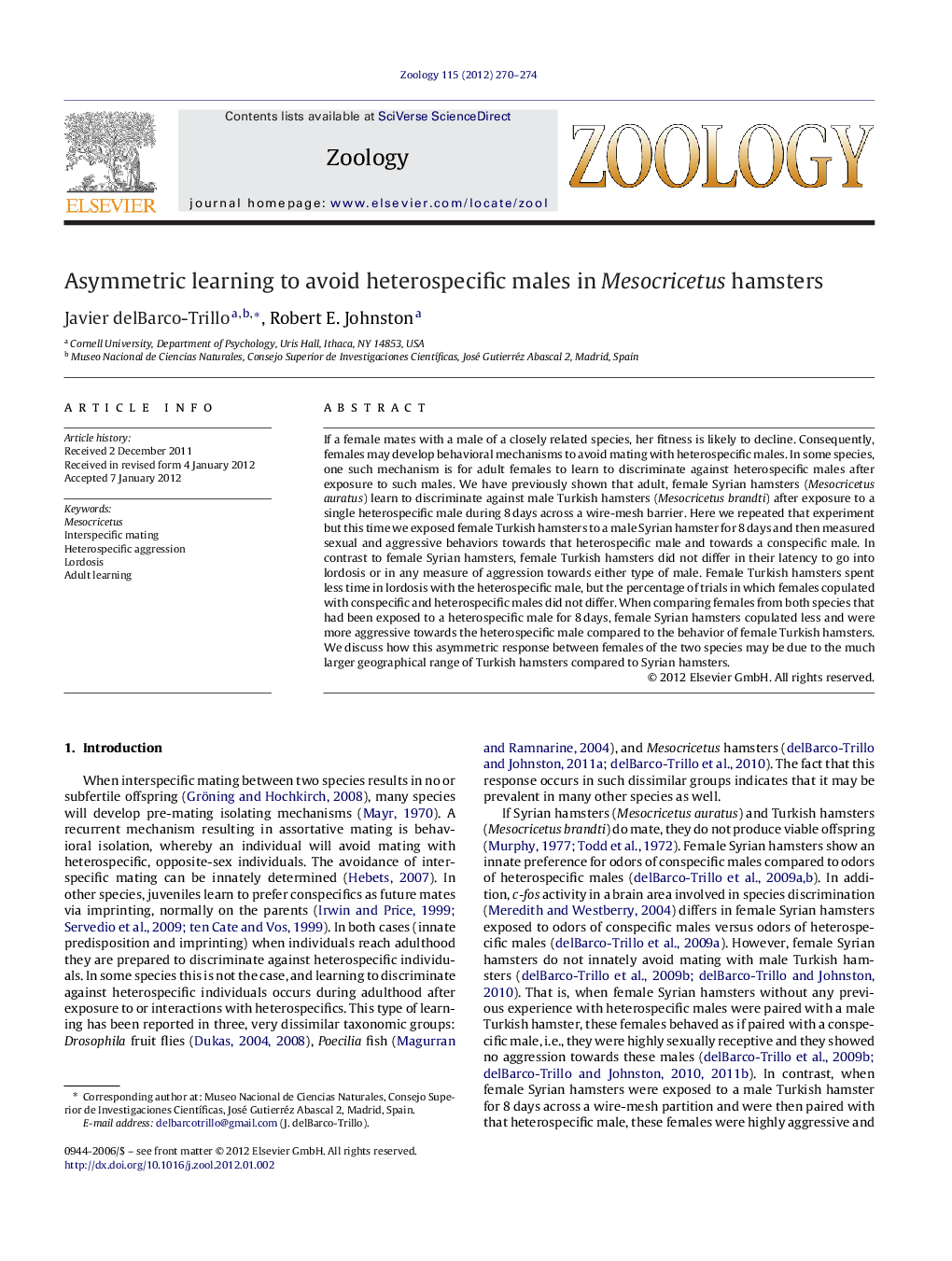| کد مقاله | کد نشریه | سال انتشار | مقاله انگلیسی | نسخه تمام متن |
|---|---|---|---|---|
| 2791182 | 1154852 | 2012 | 5 صفحه PDF | دانلود رایگان |
عنوان انگلیسی مقاله ISI
Asymmetric learning to avoid heterospecific males in Mesocricetus hamsters
دانلود مقاله + سفارش ترجمه
دانلود مقاله ISI انگلیسی
رایگان برای ایرانیان
موضوعات مرتبط
علوم زیستی و بیوفناوری
علوم کشاورزی و بیولوژیک
علوم دامی و جانورشناسی
پیش نمایش صفحه اول مقاله

چکیده انگلیسی
If a female mates with a male of a closely related species, her fitness is likely to decline. Consequently, females may develop behavioral mechanisms to avoid mating with heterospecific males. In some species, one such mechanism is for adult females to learn to discriminate against heterospecific males after exposure to such males. We have previously shown that adult, female Syrian hamsters (Mesocricetus auratus) learn to discriminate against male Turkish hamsters (Mesocricetus brandti) after exposure to a single heterospecific male during 8Â days across a wire-mesh barrier. Here we repeated that experiment but this time we exposed female Turkish hamsters to a male Syrian hamster for 8Â days and then measured sexual and aggressive behaviors towards that heterospecific male and towards a conspecific male. In contrast to female Syrian hamsters, female Turkish hamsters did not differ in their latency to go into lordosis or in any measure of aggression towards either type of male. Female Turkish hamsters spent less time in lordosis with the heterospecific male, but the percentage of trials in which females copulated with conspecific and heterospecific males did not differ. When comparing females from both species that had been exposed to a heterospecific male for 8Â days, female Syrian hamsters copulated less and were more aggressive towards the heterospecific male compared to the behavior of female Turkish hamsters. We discuss how this asymmetric response between females of the two species may be due to the much larger geographical range of Turkish hamsters compared to Syrian hamsters.
ناشر
Database: Elsevier - ScienceDirect (ساینس دایرکت)
Journal: Zoology - Volume 115, Issue 4, August 2012, Pages 270-274
Journal: Zoology - Volume 115, Issue 4, August 2012, Pages 270-274
نویسندگان
Javier delBarco-Trillo, Robert E. Johnston,